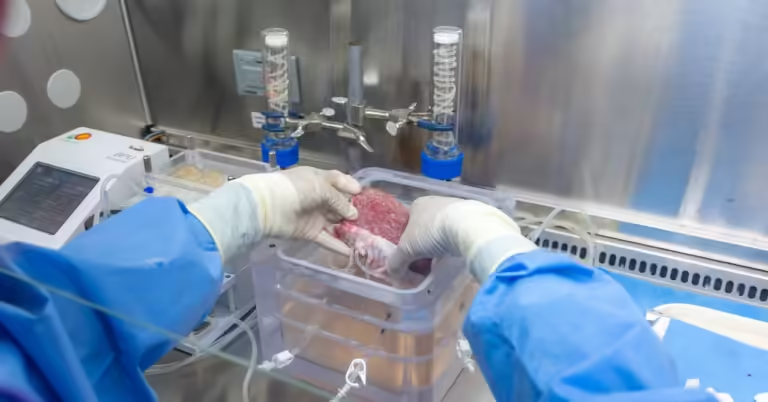A healthy liver is spongy, reddish-brown, and smooth in appearance. But when surgeons removed this liver from the refrigerator, it was hard, marbled, and bumpy — evidence of cirrhosis, a type of end-stage liver disease. Over time, the man’s healthy liver cells were replaced by scar tissue, and eventually his liver stopped functioning. His only option was to get a new liver.
The liver is the second most in-demand organ. In 2023, a record 10,660 liver transplants were performed in the United States. This is due in part to a steady increase in the number of living donors. In a living donor liver transplant, a part of a healthy person’s liver is taken and transplanted into a recipient. But even with this increase in transplants, not everyone who needs a new liver can get one. Patients may have other health problems that prevent them from receiving a transplant, or they may die while waiting for a transplant. In 2022, the most recent year for which data is available, the Centers for Disease Control and Prevention recorded nearly 55,000 deaths from chronic liver disease.
Living-donor transplants are possible because the liver has a greater ability to regenerate itself than any other organ in the body. In healthy people, the liver can regrow to its original size even after up to 90% of it has been removed. However, disease and lifestyle factors can cause permanent damage that prevents the liver from repairing itself.
When Soto Gutierrez was studying medicine at the University of Guadalajara in Mexico, his uncle died of liver disease. Since then, he has dedicated himself to finding a cure for patients like his uncle. Early in his career as a doctor, he noticed that while some patients with scarred livers were tied to hospital beds waiting for transplants, those with cirrhosis were walking around outside and living seemingly normal lives. He figured there must be a cellular difference in these livers.
He teamed up with UPMC transplant surgeon Ira Fox to search for transcription factors – master regulators that can turn the expression of groups of genes up or down – that might be able to reprogram damaged organs. Genes depend on transcription factors to carry out many of an organ’s important functions. Together, Soto-Gutierrez and Fox analyzed more than 400 failing livers from transplant patients. Comparing them with dozens of healthy livers that served as controls, they identified eight transcription factors that are essential for organ development and function.
The researchers focused specifically on HNF4alpha, which appears to act like a master control panel that governs much of the gene expression in liver cells. In healthy liver cells, levels of HNF4alpha were elevated, as were the other proteins it controls. But in the cirrhotic livers they tested, HNF4alpha was nearly absent.
The research team needed a way to get the transcription factors into liver cells, so they turned to mRNA technology. Used in some COVID-19 vaccines, mRNA is a molecule that carries instructions for making proteins, including transcription factors. In the COVID-19 vaccine, the mRNA codes for a part of the virus called the spike protein. When injected into a person’s arm, the mRNA enters cells and begins the process of making the protein. The body recognizes these spike proteins as foreign and produces antibodies and other defensive factors.

